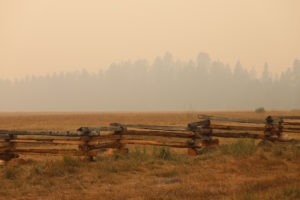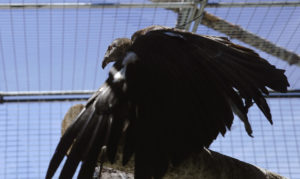On the first day of summer, a thunderstorm crackled across much of California. Eight thousand lightning strikes ignited over 2,000 fires that burned more than 1.1 million acres by late July. California ecosystems have evolved with lightning-induced fires, but the event firefighters are calling “the 2008 siege” was unusual. Firefighters don’t usually worry about large lightning-induced fires until mid-July, but this storm arrived early and had an atypical origin. Northern California’s typical late summer storms are southeast “monsoon flows” coming out of Arizona and Southern California, says Basil Newmerzhycky, a meteorologist with the U.S. Forest Service. This early storm began in the Pacific Ocean, somewhere between Central California and Hawaii. The number of strikes was also uncommon. “It was the worst dry lightning outbreak since 1987,” says Newmerzhycky. To top it off, the lightning struck especially dry vegetation because of California’s record-low rainfall last spring.
Among the worst of the fires was the Basin Complex fire in Big Sur, which burned 162,818 acres from Point Sur south to Big Creek State Reserve. This rugged area of the coast and the Santa Lucia Mountains is home to the region’s largest population of reintroduced California condors and to the Ventana Wildlife Society (VWS) facility where condors are held prior to release. With local roads closed, the Coast Guard sent in a helicopter to rescue seven juvenile condors and their adult condor mentor.
For 17 days after the penned condors’ rescue, VWS biologists worried about the 43 condors flying free in the area. “We didn’t know if they would survive on their own,” says VWS Executive Director Kelly Sorenson. These “wild” condors, ranging in age from 18 months to 11 years, rely in part on five feeding stations operated by VWS.
When VWS biologists were allowed back into the area, they drove on roads thick with smoke, scanning for beeps from transmitters the birds wear. The beeps led the biologists to a sea-lion haul-out, where they found six condors feeding on a carcass. All but two of the 43 condors have since been accounted for. Those two probably died in the fires. To find out how to help VWS rebuild the sanctuary, go to www.ventanaws.org.
Elsewhere in the region, a wildfire burned 4,089 acres of grasslands, chaparral, and oak woodlands between Fairfield and Napa. Because it had been decades since this area last burned, the chaparral will likely recover well. While chaparral is adapted to fire, too frequent fires can be problematic. Rick Halsey, director of the California Chaparral Institute, says the plants need time to recover: to develop a seed bank in the soil and build up energy in their root burls. “If you have fire-return intervals of 20 years or less, the chaparral’s health can be compromised. If the intervals are less than ten years, destruction of the habitat is guaranteed,” he says.
Such short intervals are now being seen in Southern California. “There are so many frequent fires that they’re beginning to compromise the health of native ecosystems,” says Halsey. “The primary cause of the fires we’ve been experiencing in Southern California over the past ten years is the long-term drought.” Some ecologists worry that climate change could bring similar patterns to Northern California. For more about fire in chaparral ecosystems, go to www.californiachaparral.com.

.jpg)



